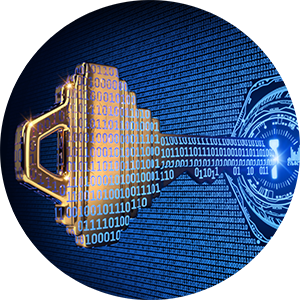 For nearly 20 years, Cybersecurity Awareness Month has served to raise awareness about the importance of cybersecurity across the Nation. The overarching theme: “Do your part, #BeCyberSmart” encourages individuals and organizations to own their role in protecting their part of cyberspace, stressing personal accountability and the importance of taking proactive steps to enhance cybersecurity. With this in mind, we’ve compiled a list of recommendations to help you keep your data and online activities safe in an age of ongoing cybersecurity threats.
For nearly 20 years, Cybersecurity Awareness Month has served to raise awareness about the importance of cybersecurity across the Nation. The overarching theme: “Do your part, #BeCyberSmart” encourages individuals and organizations to own their role in protecting their part of cyberspace, stressing personal accountability and the importance of taking proactive steps to enhance cybersecurity. With this in mind, we’ve compiled a list of recommendations to help you keep your data and online activities safe in an age of ongoing cybersecurity threats.
Secure Your System
Regardless of how your company’s online network is configured, make sure it’s running on a secure system. Use firewalls and encrypting to secure your internet connections and your servers. If you use Wi-Fi, make sure it’s hidden and protected by a strong password — and change the password frequently. Only grant network access to authorized personnel.
Require Strong Passwords for Employee Logins
Employees who log into the system should each have an individual login with a strong password that is difficult to guess. Employees should also be prompted to change passwords regularly.
Remote Access: Use With Caution
If you log into your company’s network offsite using a smartphone or other mobile device, remember that you aren’t necessarily accessing the system using a secure server. Don’t log in using public WiFi, for example — or if you do, log in using a virtual private network (VPN) to hide from hackers.
Perform Frequent Viruses, Spyware and Malware Scans
You should have a strong antivirus, anti-spyware program in place to guard your system, and make sure it receives the latest updates to make sure newer viruses can be detected and eradicated from the system.
Run Updates on All Software
It’s a pain to keep up with software updates, but when developers send these to you, they’re usually dealing with newly discovered cybersecurity threats. Always keep operating systems and other software up to date.
Back Up Your System
You should be running full backups regularly of your entire system, from shared drives to individual computers. That way, if a hacker crashes your system, you won’t lose data and you can restore at least most of your functionality.
Use Multi-Step Logins Whenever Possible
You don’t want to spend all day logging in, but in truth, the more steps to the login process, the safer it is. With HandyTrac key control, for example, our systems are designed for employees accessing key boxes to take several steps to verify their identity. Some units even include biometric (fingerprint) identification which provides excellent security against intruders and hackers.
To learn more about our secure key control systems, contact HandyTrac today!


 Viruses and other harmful germs can remain infectious for long periods of time, especially on hard surfaces such as stainless steel and plastic. Without frequent and thorough cleanings, an office can quickly become a hotbed of infection putting both your staff and residents at risk. With this in mind, here are a few tips for keeping your key control system and office areas sanitized and germ-free.
Viruses and other harmful germs can remain infectious for long periods of time, especially on hard surfaces such as stainless steel and plastic. Without frequent and thorough cleanings, an office can quickly become a hotbed of infection putting both your staff and residents at risk. With this in mind, here are a few tips for keeping your key control system and office areas sanitized and germ-free. HandyTrac Systems, a leading electronic key control company, is pleased to announce a strategic partnership with property management software companies, ResMan and Yardi to provide seamless work order delivery for multifamily, student and military housing customers nationwide.
HandyTrac Systems, a leading electronic key control company, is pleased to announce a strategic partnership with property management software companies, ResMan and Yardi to provide seamless work order delivery for multifamily, student and military housing customers nationwide.
 Security is one aspect of property management that often leaves something to be desired. Many organizations think they have their bases covered, yet there are a variety of factors that are often overlooked, and these factors can have lasting impacts if exploited.
Security is one aspect of property management that often leaves something to be desired. Many organizations think they have their bases covered, yet there are a variety of factors that are often overlooked, and these factors can have lasting impacts if exploited. Tasked with the handling and delivery of nearly 188 million pieces of mail each day,
Tasked with the handling and delivery of nearly 188 million pieces of mail each day,  Without a smart key management system, lost or stolen keys are untraceable. As a result, no suspects or clues were identified in this case, leaving the property management company with eleven compromised locks needing replacement,
Without a smart key management system, lost or stolen keys are untraceable. As a result, no suspects or clues were identified in this case, leaving the property management company with eleven compromised locks needing replacement,  Secure the perimeter
Secure the perimeter Prior to selecting and implementing an electronic key system, it’s important to review your community or facility’s needs. Start by asking yourself the following questions:
Prior to selecting and implementing an electronic key system, it’s important to review your community or facility’s needs. Start by asking yourself the following questions: